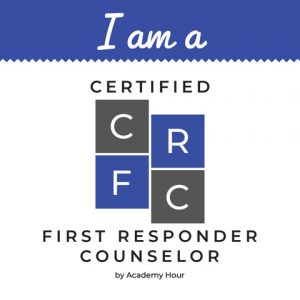Let’s be honest—resilience gets a bad rap. Somewhere along the way, it started sounding like just another thing we’re supposed to master, right up there with mindfulness and work-life balance. We hear phrases like “Stay strong!” and “You’ve got this!” plastered on inspirational posters and coffee mugs, and we’re expected to push through burnout with a smile.
But here’s the truth: resilience isn’t about powering through until you crash and burn. It’s not about pretending everything’s fine when you feel like falling apart. It’s about finding ways to bend without breaking—ways to catch yourself when life starts to feel like a late-2000s emo anthem.
And honestly? Sometimes resilience feels like that moment in a song right before the chorus hits—a little messy, a little chaotic, but full of potential.
If you’re in a high-stress, people-centered role, you know what I’m talking about. Every day, you show up. You care. You push past exhaustion because that’s just what you do. But that kind of giving takes a toll, even if you don’t notice it at first. Resilience becomes less about being strong and more about figuring out how to recover.
And recovery? That’s where the magic happens.
Resilience Is a Skill, Not a Superpower
Here’s the good news: resilience isn’t something you’re born with—or without. It’s a set of learnable skills that can make a huge difference in how you feel, how you think, and how you bounce back when things get hard. Think of it like learning to play an instrument: awkward at first, but with practice, you build strength, creativity, and confidence.
One of the most powerful skills? Recovery rituals.
It sounds fancy, but it’s really just a small, intentional break that helps your nervous system reset. These rituals can be anything that brings you back to center—stepping outside for five minutes of fresh air, making a playlist that feels like a hug from your 16-year-old self, or turning off notifications for an hour because you’re a human being, not a robot.
Recovery rituals aren’t about fixing everything at once. They’re about finding those tiny, almost invisible cracks in your day and filling them with something that feels like life.
Why Tiny Moments of Recovery Matter
When you give your body and mind space to recover, you change the game. Neuroscience shows that even small moments of joy or calm can shift your brain out of fight-or-flight mode and into what’s called the rest-and-digest state.
Think of it this way: You can’t keep sprinting forever. Recovery is like pausing to tie your shoelaces and breathe before the next stretch of road. And yeah, I know it can feel counterintuitive—especially when life’s chaotic—but those tiny pauses are exactly what make you stronger in the long run.
You Deserve More Than Survival
Here’s the part that matters most: you deserve more than survival. You deserve to feel alive. To feel moments of joy, even if the world feels heavy. To step out of the noise and reconnect with something real.
It’s easy to get stuck in survival mode, especially in high-stress environments. But survival isn’t the goal. The goal is to thrive—even in the messy, beautiful, complicated middle of things.
So how do you start?
Find a recovery ritual that works for you. Something small. Something real. It could be five minutes of writing down what’s been circling in your brain. It could be sitting with your dog in the sun. It could be singing along to that old song you forgot you loved until it hit you right in the chest.
And then—this is the key—protect that ritual like it’s your favorite record. Carve out space for it, even when it feels impossible. Especially then.
What’s Your Ritual?
Resilience doesn’t mean you have to have it all figured out. (Spoiler: nobody does.) It means you start with one small thing and build from there. So here’s my challenge to you: Find a recovery ritual that feels right —not perfect, not polished, just right – for now. You deserve it.





